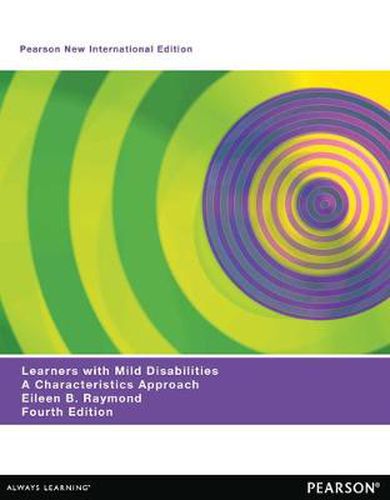Readings Newsletter
Become a Readings Member to make your shopping experience even easier.
Sign in or sign up for free!
You’re not far away from qualifying for FREE standard shipping within Australia
You’ve qualified for FREE standard shipping within Australia
The cart is loading…






A primary text for use in high-prevalence courses in special education programs. A critical look at four high-prevalence mild disabilities as seen from several unique perspectives. Learners with Mild Disabilities focuses on four high-prevalence disorders: mild intellectual disabilities, learning disabilities, emotional/behavioral disorders, and ADHD. The text also considers the Autism Spectrum Disorders, such as HFA and Asperger’s Syndrome, in addition to other mild conditions such as communication disorders. This text looks first at the concept of disability from conventional categorical perspectives, and then shifts to focusing on learners from the perspective of alternative, non-categorical frameworks. It describes students with disabilities and related conditions with respect to a variety of individual strengths and needs, considering their cognitive, perceptual, language, academic learning, and social/emotional characteristics. The reader is encouraged to apply these conceptual frameworks through the analysis of numerous vignettes and extended case studies that are drawn from the experiences of real children and teachers throughout the text. Using this non-categorical framework best prepares special educators for the complex job of providing effective services to the full and unique spectrum of students with mild disabilities.
$9.00 standard shipping within Australia
FREE standard shipping within Australia for orders over $100.00
Express & International shipping calculated at checkout
A primary text for use in high-prevalence courses in special education programs. A critical look at four high-prevalence mild disabilities as seen from several unique perspectives. Learners with Mild Disabilities focuses on four high-prevalence disorders: mild intellectual disabilities, learning disabilities, emotional/behavioral disorders, and ADHD. The text also considers the Autism Spectrum Disorders, such as HFA and Asperger’s Syndrome, in addition to other mild conditions such as communication disorders. This text looks first at the concept of disability from conventional categorical perspectives, and then shifts to focusing on learners from the perspective of alternative, non-categorical frameworks. It describes students with disabilities and related conditions with respect to a variety of individual strengths and needs, considering their cognitive, perceptual, language, academic learning, and social/emotional characteristics. The reader is encouraged to apply these conceptual frameworks through the analysis of numerous vignettes and extended case studies that are drawn from the experiences of real children and teachers throughout the text. Using this non-categorical framework best prepares special educators for the complex job of providing effective services to the full and unique spectrum of students with mild disabilities.